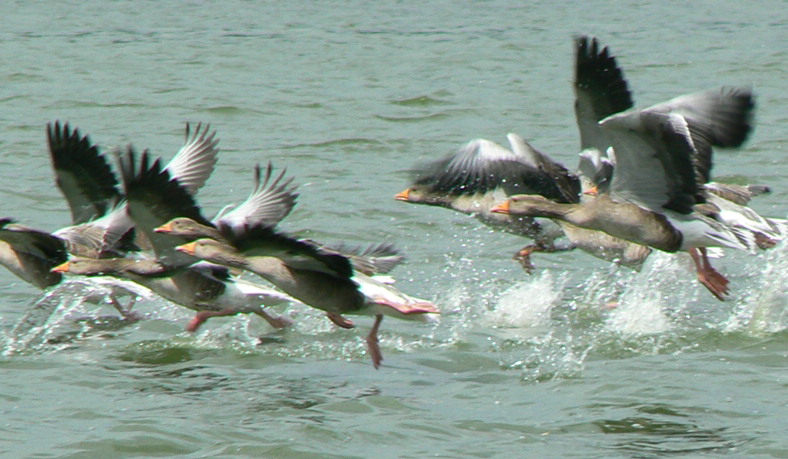
[026] Anser anser, Greylag
Introduction
Anser anser, the Greylag, is the common goose seen all over the UK, widespread and common over Eurasia and North Africa. Many British ones are semi-tame and can be seen on ornamental lakes. Wikipedia calls it a Greylag Goose but it’s generally known as just a Greylag.
In normal, informal English just as the word ‘duck’ is synonymous with ‘Mallard,’ the word ‘goose’ generally means ‘Greylag.’
I will look briefly at other Anser species
Taxonomy
Kingdom – Animals
Phylum – Chordates
Class – Aves (birds)
Order – Anseriformes
Family – Anatidae (Ducks, Geese and Swans)
Subfamily – Anserinae (Geese and Swans)
Genus – Anser (Grey Geese)
Scientific Name – Anser anser
The family of Anatidae are closely related in some ways and it is possible for Anser geese to hybridise with Branta (Black Geese) species or even with swans. When originally classified, all ducks, geese and swans were Anas but that didn’t last for long.
Name
‘Lag’ is an old name for a domestic goose derived from the call used in herding them, hence grey-lag. It won’t surprise you by now that anser is the Latin for goose.
Geese
Statistically, January has been a bit unusual with more than the expected numbers of trees, insects and birds all bunching up at the beginning of the alphabet. It has given us the chance to look at the taxonomy of Anatidae and all of the ducks. So, all that is left is the very small subfamily Anserinae, containing all geese and swans.
If we leave out the white geese, (which we won’t see in Britain) there are just three genera, each with just a few fairly similar species.
- Cygnus (Swans) coming a bit further down the alphabet,
- Branta (Black geese) coming at the end of February,
- Anser (Grey geese)
I will look mainly at Anser anser, which is the type species. It defines the genus.
Description
We all know what geese look like. They are larger than ducks and smaller than swans. They have a long neck, longer than ducks and shorter than swans.
Their plumage is mainly a dull grey-brown, darker on the head, mottled and barred on the back and paler underneath the body. As for all geese and swans, male and females are very similar with the males being slightly larger.


It has an orange or pink bill with a white tip. Adult birds have a very distinctive look to their neck feathers,



The large webbed feet are pink.
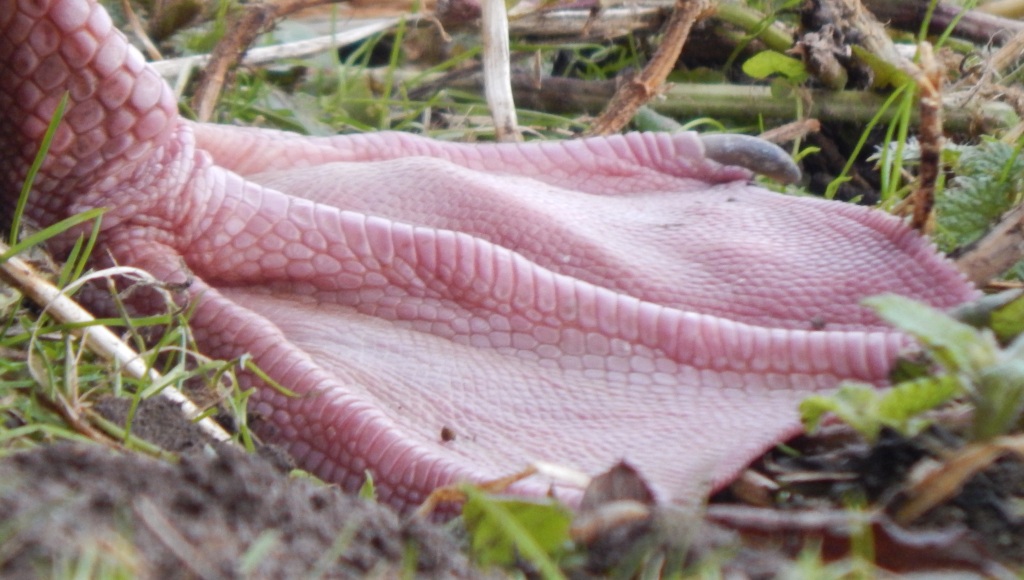
Habitat
Although geese live near water they feed mainly on grass. This not an efficient way to eat and so they consume large quantities of food. In general, they migrate further North in Summer where the longer days give them more time to eat.
The Greylag is now widespread and very common in Britain, derived mostly from feral populations. In the South of England and in urban regions many of them are resident all year. They have learned to eat many crops such as wheat, peas and potatoes.
As for all waterfowl, the young birds follow their parents and are able to feed themselves almost immediately. They are gregarious and the goslings stay with the parents. At first, they look very similar to most ducklings and goslings with black feet. They gradually become like their parents.
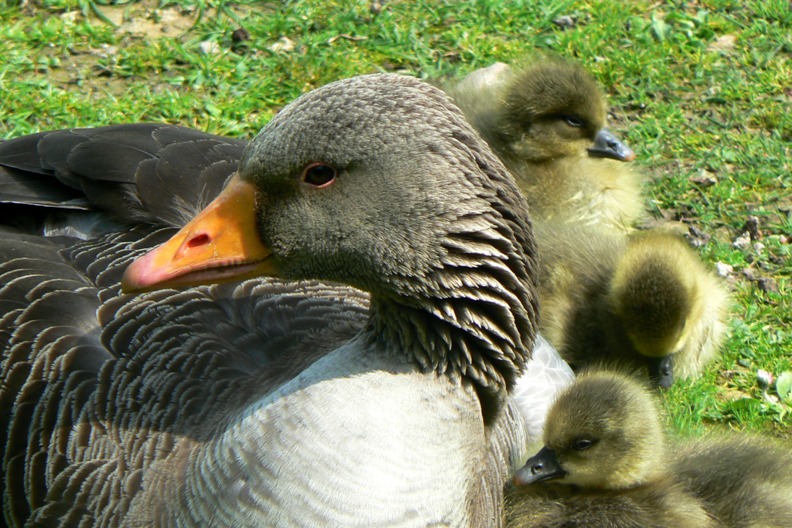

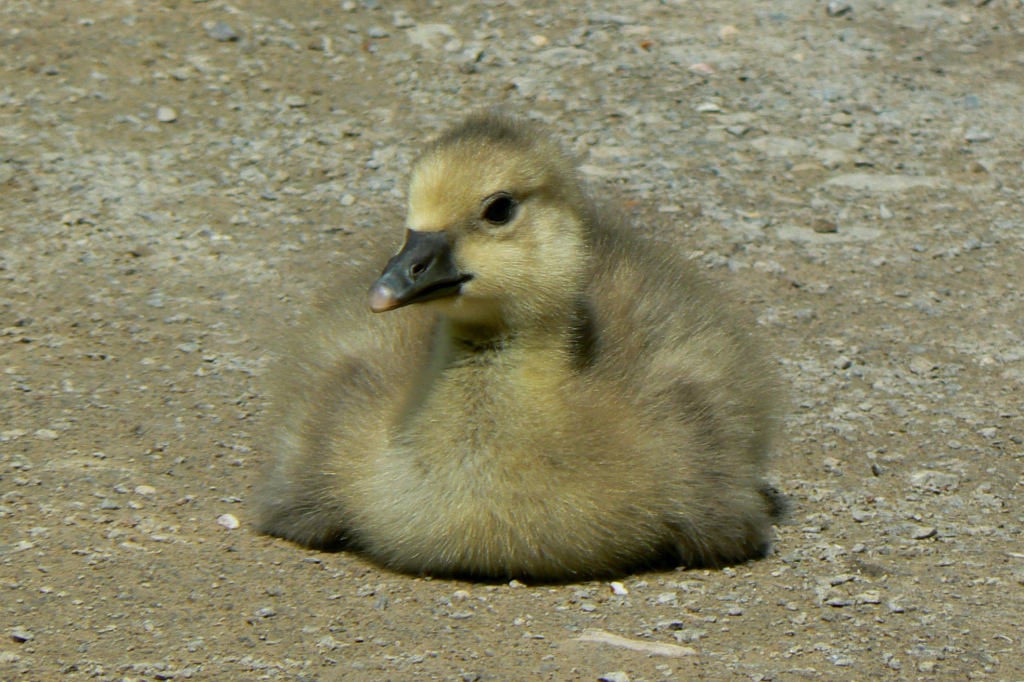





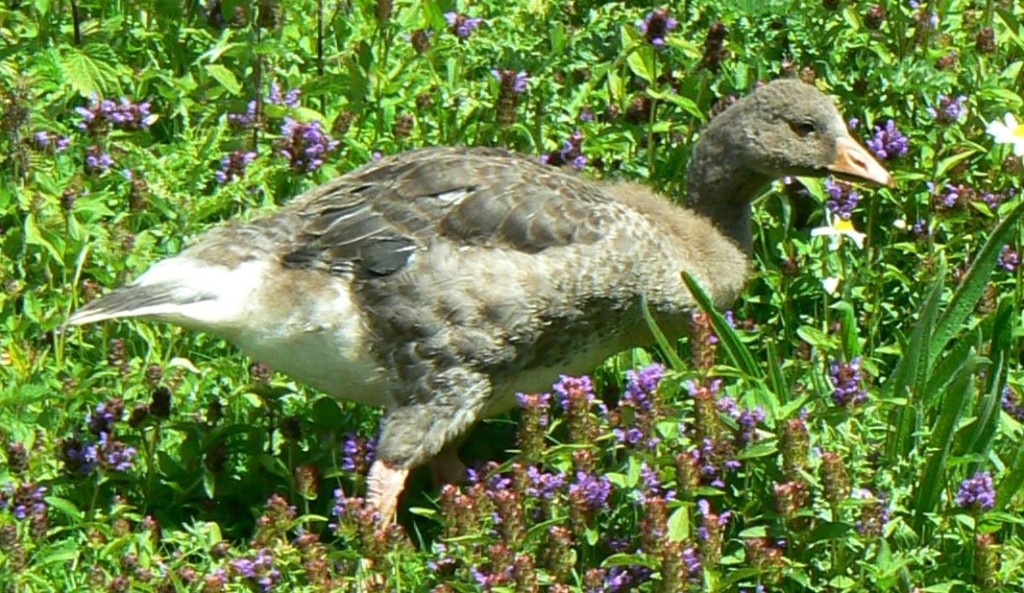
Mythology
Geese have been revered and associated with gods such as the Egyptian sun god Ra and the Roman goddess of love Aphrodite.
Domesticated Geese
Geese were domesticated at least 3 000 years ago from the species Anser anser and are now known as a subspecies Anser anser domesticus. In Britain at least domestic geese are usually all white and significantly larger than wild Greylag. The one below looks like an escaped domestic goose.
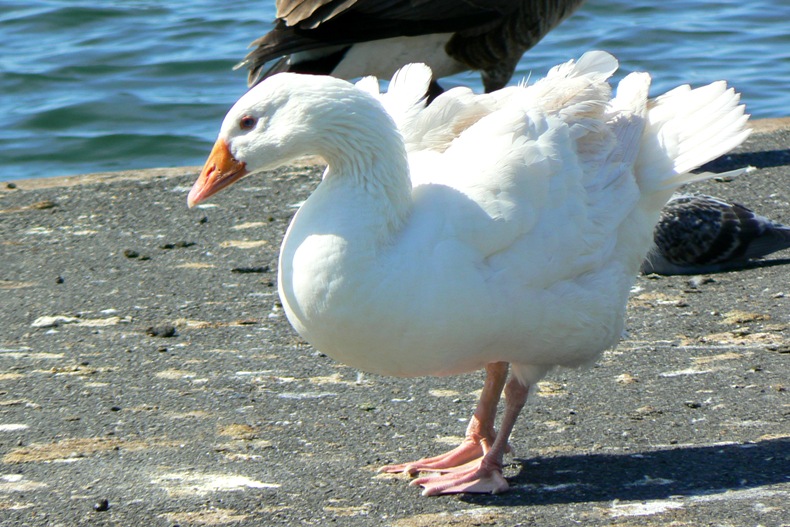
In the Eighteenth Century, geese were traditionally eaten at Michaelmas and driven in large flocks from the East of England to London. The tradition of pulling a wishbone for luck comes from the belief that geese had the powers of an oracle. When I was young, we did it with chickens and turkeys but I suspect that is a dying tradition.
Use
Apart from their use as a food source, goose feathers have been used as quills and for arrows.
I have also seen them at agricultural shows being used instead of sheep for demonstrations of sheepdog skills!

Other Notes
They are often seen on ornamental lakes but may not be so tame as my pictures may suggest. Some of my pictures of very young birds come from Slimbridge.
I want to include the following picture as an illustration of how well birds can cope with only one leg.

I saw this bird for several years in the Forest of Dean and it seemed to cope very well. I have also seen half a dozen other one-legged birds of different species including a Rook, a Pied Wagtail and a gull. As long as they can fly and hop around, they seem to be OK.
See also
All eleven species of Anser are quite similar in appearance. Most are not normally seen in Britain.
- Anser brachyrhynchus, the Pink-footed Goose. The Latinized Greek brachyrhynchos (‘short-bill’) is a better guide to identification than its pink feet. The bill is black with some bright pink. They are Winter visitors to localized areas of Britain – Norfolk, the North of England and Scotland.
- Anser albifrons, the Greater White-fronted Goose. Usually identified by the small white area to the base of the bill. ‘Albi-frons’ means ‘white-front.’ Note that some Greylag have this marking, possibly associated with domestic geese. They spend their Summers in the far North. A very small population winter in and around the Slimbridge WWT site, but they tend to keep well away from the hides. In Britain they are usually called just White-fronted geese.
- Anser fabalis and Anser serrirostris, the Bean Goose, is a rare visitor. (Internationally and in the USA, these are recognized as two species but in the UK, the British Ornithologist’s Union considers them to be one species.)
- Amser erythropus, the Lesser White-fronted Goose; Anser caerulescens, the Snow Goose and Anser rossii, Ross’s Goose are very occasionally seen as strays from their usual range.
- I have seen Anser indicus, Bar-headed Goose and Anser canagicus, Emperor as isolated birds that have escaped from collections.




Pingback: [228] Mergus merganser, Goosander | The Species of Britain